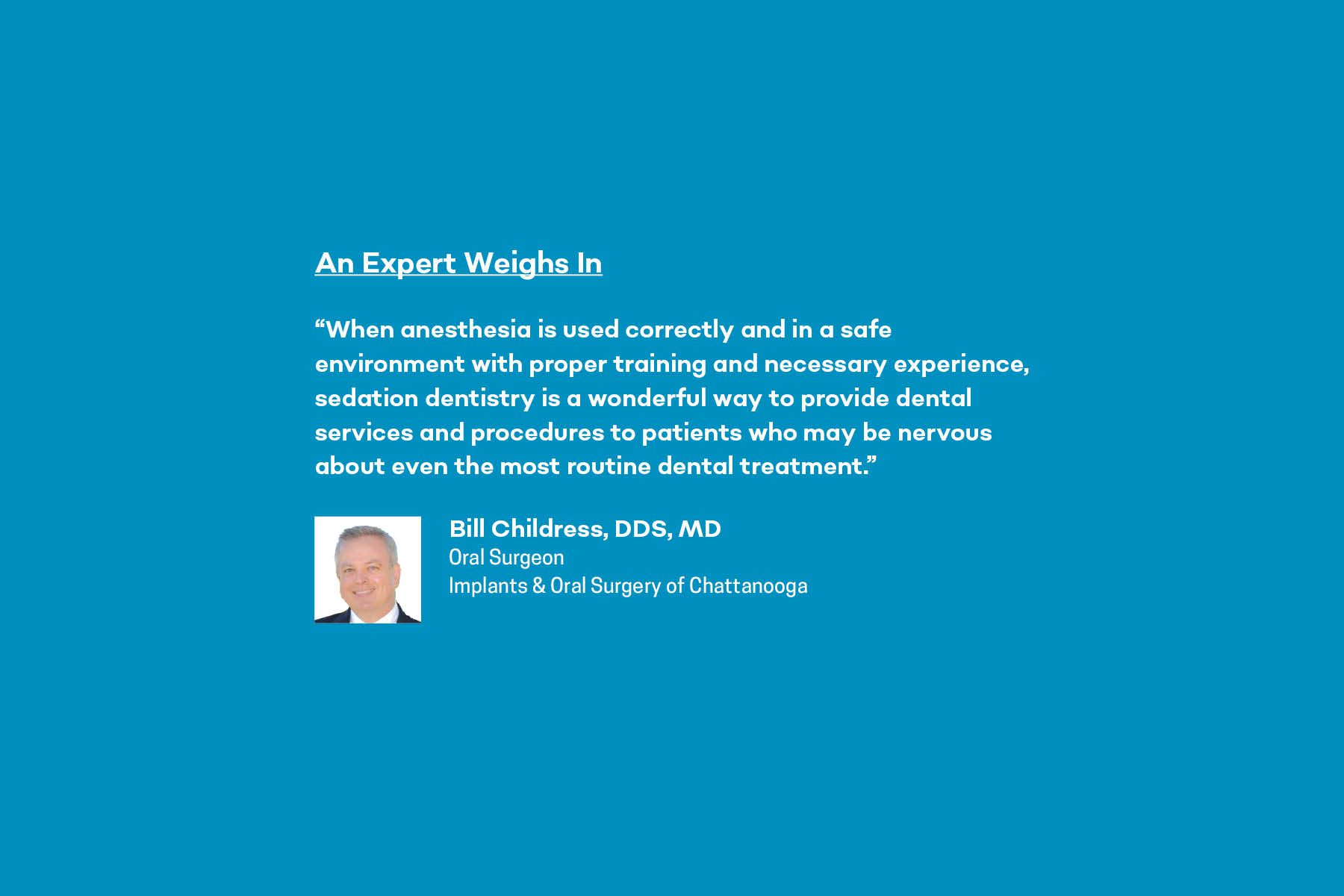Annual Advancements in Medicine Section
From 3D-printing technology in dentistry, to robotic arm assistance in orthopedic surgeries, to anesthetic advances and beyond, new research in the medical field makes for easier procedures for patients and doctors alike. These Chattanooga-based medical professionals share the latest in revolutionary treatment options.
By Lindsey June
A variety of sedation options are available to simplify dental procedures and reduce pain.
Understanding Anesthesia
Anesthesia is a medical treatment that prevents patients from feeling pain during surgeries and other advanced medical procedures. Dentists and oral surgeons frequently use anesthetics to not only help with that pain, but also to alleviate feelings of anxiety and fear in nervous patients.
There are many different anesthetic options to choose from, depending on the procedure and your personal level of comfort. With light sedation, you remain awake and alert. Moderate sedation means you remain conscious but might not be able to speak or remember the appointment once the procedure is over. If deep sedation is used, you are completely unconscious until the drug wears off or is reversed.
Types of Anesthesia
In the field of dentistry and oral surgery, the anesthetic options available to you include:
Local Anesthesia
Local anesthetics are fast-acting but mild sedatives. They are used to block pain in a specific and small part of the body. Medication is injected into the affected area and prevents nerves from transmitting pain signals to the brain. You remain fully conscious for this procedure.
Nitrous Oxide
If you’ve ever had a dental procedure that makes you giggly, chances are you were given nitrous oxide, also known as “laughing gas.” This is typically administered before a procedure. It dulls painful sensations, and the effects wear off almost immediately after usage stops.
Oral Conscious Sedation
This is a moderate form of sedation in which patients take a pill that puts them into a calm state that approaches sleep. Under oral conscious sedation, patients can respond to sedation but will feel very relaxed. You might have very little memory of the appointment when the drug wears off.
IV Sedation
Similar to oral conscious sedation, this type of moderate sedation is delivered through an IV. It is primarily used for patients who have a fear or phobia of dentistry.
General Anesthesia
General anesthesia puts you to full sleep for the duration of the procedure or surgery. You will have no memory of the event once it’s complete.
Benefits to Patients
If you worry about dental procedures, try to remember that anesthesia is available to ease pain and reduce anxiety. Your dentist or oral surgeon will walk you through the best option for your case, and you can expect a more relaxing and pain-free experience.


